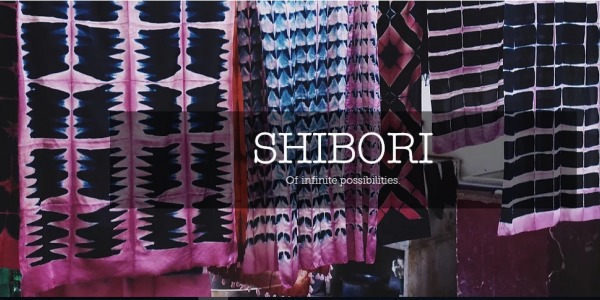Currency
| Free Shipping pan UAE on orders above 300 AED & GCC on orders above 1000 AED | Shop Independent Labels | Shop Local | #supportsmallbusiness |
Blog
-
July 14, 2023Itajime, literally meaning "board-clamping" in Japanese, is one technique of shibori which uses pieces of wood clamped together around sections of folded fabric to resist the dye in particular shapes. Traditionally, the cloth was clamped between 2 wooden blocks intricately carved with the negative of the design one wanted to achieve. In modern times, more simple shaped blocks are used to resist the dye. Perched on the far western edge of India, squeezed between the Arabian Sea and the Pakistani border, and spanning the Thar Desert and the Great Rann of Kutch, sits the desert region of Kutch, located in the state of Gujarat. This region, as well as Sindh across the border in Pakistan, is a rich, cultural melting pot and, in our opinion, a textile Mecca. Despite historical challenges, such as division and migration at the time of partition and reoccurring earthquakes, and an extreme climate, a vast number of unique and beautiful textile traditions local to this region thrive here.
-
July 14, 2023Unless you see the artisans at work, and understand the process from start to finish, it can be very difficult to grasp the vast amount of work that goes into hand crafting a product, no matter how simple it may seem. One Our kantha begins with a sari. The sari is made, then bought and worn by a woman somewhere in India. One day a sari-trader knocks on the door of the woman and asks if she has any saris to sell or trade. The sari passes to the hands of the sari-trader, who then passes it to another and finally another, and sometime later, the sari finds itself in New Delhi. It's worth noting that this tradition of bartering off old saris is an old one. While saris are most often kept for decades, or handed down to people close to the family (such as servants), used or old pieces (saris as well as other clothing) can also be sold to a 'bhandiwali'. 'Bhandi' means utensils in Hindi. A bhandiwali will make her rounds of one particular area on a regular basis. When a woman wants to trade
-
-
July 07, 2023There are countless myths and legends around the many different powers and attributes that birthstones have. Whether or not you believe these legends, it’s hard to disagree that learning about birthstones can be an educational and entertaining experience. Discover what makes your birthstone a powerful statement of your finest qualities by clicking on the month you were born in below. January - Garnet Garnet January borns – your birthstone is Garnet. The name “garnet” originates from the medieval Latin Granatus, meaning “pomegranate,” in reference to the similarity of the red color. This beautiful stone, which is most commonly red but can be found in a range of other colors, symbolizes peace, prosperity and good health. Some say it even has the power to give the wearer eternal happiness, health and wealth. The Victorians made garnets very popular. Some of the loveliest garnet jewelry from that era mimics its pomegranate namesake, with clusters of tiny red gems forming a larger





Validate your login
Sign In
Create New Account